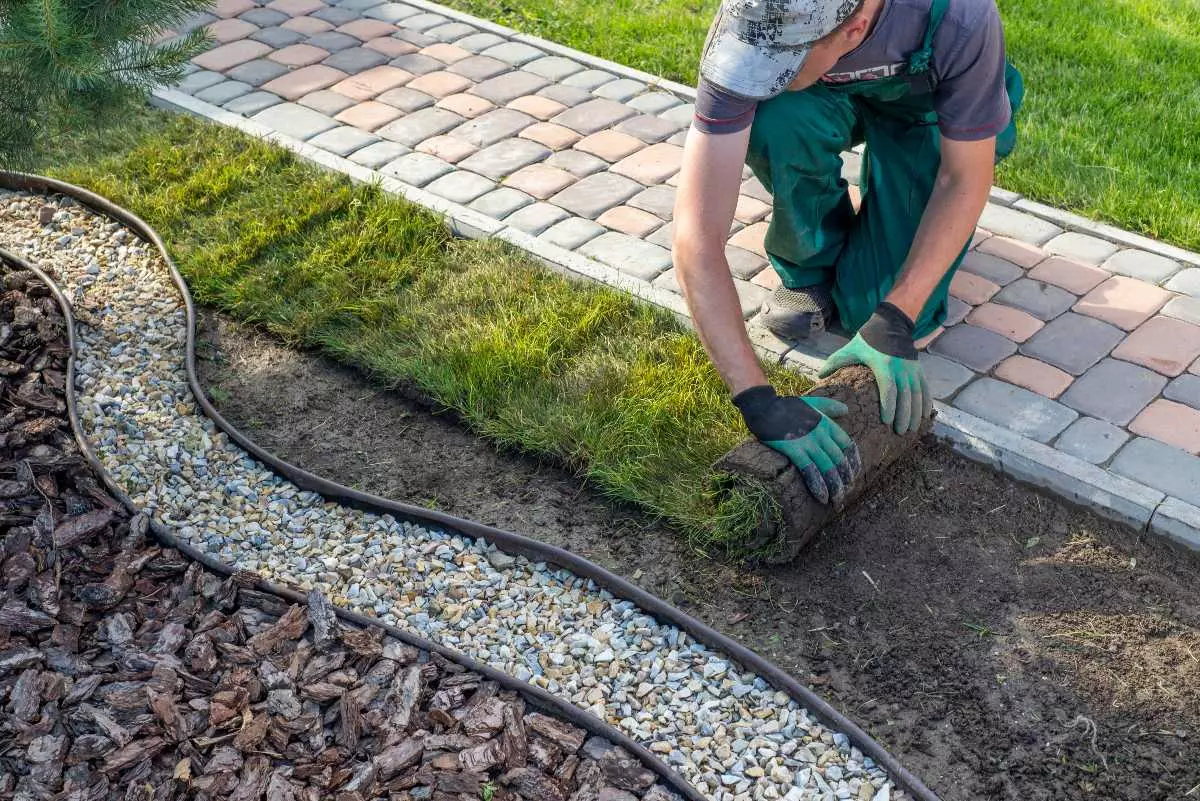How to Start a Landscaping Business
It’s a great time to get into landscaping. According to a 2021 study by the IBIS World Landscaping Services Industry Report, the landscape services industry has a market size of $105.1 billion. The study also showed that the sector employs more than 1 million people. Moreover, the industry’s market size in the U.S. has been growing 2.5% on average between 2016 and 2021.
Why Start a Landscaping Business?

If you like to run your own company, set your own work hours and schedule, work outdoors, and reach financial independence, then you may want to consider starting a landscaping business.
Starting your own company may be challenging, but the payout may be worth it if you do it right. So, follow the steps mentioned below to make your journey in landscape entrepreneurship smoother.
Start with Certifications and Education
Sometimes, a love of gardening and extensive work experience may be sufficient to start a successful landscaping business. Other times, an academic degree or certification can help you stand out from your competitors, attract new customers, and charge higher rates.
To help you start a successful career in the landscape industry, the National Association of Landscape Professionals offers landscape certification options for those who are interested in pursuing a career as:
- Interior technicians
- Exterior technicians
- Lawn care technicians
- Law care managers
- Contractors
- Horticulturists
In addition to the National Association of Landscape Professionals, the Environmental Protection Agency (EPA) also provides several certification programs. Their programs are most suitable for individuals who want to pursue a career as landscape irrigation professionals, emphasizing irrigation system design, installation, and maintenance.
A certification in addition to work experience may be sufficient for the positions mentioned above. But some career paths require an educational degree, such as landscape architecture or design. For instance, you may need to pursue a bachelor’s degree in landscape architecture to work as a landscape designer or architect.
Figure Out the Competition Level
To identify and understand your competitors, you need to perform market research. First, look at landscaping companies that provide the same services in your area. You can gather information by visiting their websites and talking to their customers. Ideally, it would help if you had the answer to the following questions:
- What types of services are they offering?
- How much are they charging?
- What are their target markets?
- What is their marketing strategy?
- How big is their team?
Assessing your competition may give you the knowledge to outperform them, create unique marketing strategies, set competitive prices, or improve your business performance.
Choose Your Business Structure

The business structure you choose will influence your daily operations, taxes, personal liability, and asset protection. That’s why you should carefully select your landscape business structure to protect your personal assets and benefit from them. Most landscaping businesses opt for the following three options: sole proprietorship, LLC, or partnership.
Sole proprietorship
A sole proprietorship is a business owned by a single individual. Starting a sole proprietorship is relatively easy and inexpensive, and the owner will have total control over their business. The sole proprietor is responsible for everything related to the business, such as expenses, taxes, and legal liabilities. However, a sole proprietorship may come with risks. For example, since there is no legal distinction between the business owner and the business, the owner may be held personally liable for the debts of the lawn care company.
Limited Liability Company (LLC)
A landscaping business may be considered a medium to high-risk business because the landscaper will work on other people’s property. There may be a risk of damaging a client’s personal assets, which is why starting an LLC may be a great option. As an LLC, the business owner’s personal assets are protected from business liability in case of an accident. In the event of a possible lawsuit or bankruptcy, the business owner will not be personally liable. Moreover, LLC owners pay taxes at the personal income tax rate rather than the corporate tax rate.
Partnership
If the landscape business has more than one owner, a partnership may also be a good option. There are two types of partnerships: limited partnerships and limited liability partnerships.
In a limited partnership, one partner has unlimited liability as the general partner. The other partners have limited liability and control over the company. A limited partnership is taxed through personal tax returns, whereas the general partner must pay self-employment taxes.
Limited liability partnerships give limited liability to all the partners. It protects them from debts against the partnership, and they won’t be responsible for the actions of their partners.
Choose Your Niche and Services
In the landscaping industry, there are a wide variety of services that a landscaper can offer. But when you are first starting, it is often best to decide your specialty and focus on it. Then target the landscaping service you are best at or passionate about and offer that service to your clients.
A specialty can help you save money by purchasing only a small number of necessary equipment. As the business grows, you can offer more services.
Types of Landscaping
Landscape Maintenance
This specialty focuses on pruning hedges, mowing lawns, watering flowers, etc. This type of landscaping requires a low initial investment because it doesn’t require much equipment.
Fertilization, Weeding, and Pest Control
This is also part of landscape maintenance specializing in keeping plants and lawns healthy. Lawn fertilization and pest control require the use of potentially dangerous chemicals. That’s why you need to have expert knowledge and training in this field to protect yourself. You may also need to obtain an extra permit to work with harmful chemicals.
Deck and Patio Construction
If you have the skills to construct decks and patios, consider incorporating them into your business. While installing the deck and patio, you may also be responsible for the plants and the lawn around it. Before taking on a project like this, it is best to familiarize yourself with your region’s building codes and regulations.
Sod and Lawn Installation

You can also specialize in laying sod, spreading grass seed, and installing lawns for your clients. This type of service is contract-based rather than a recurring service.
Landscape Architecture and Landscape Design
If you are creative, consider specializing in landscape architecture and design. This niche requires labor-intensive projects such as building terraced gardens and contouring the landscape.
Commercial vs. Residential Landscaping
Commercial landscaping focuses on professional properties, such as office buildings, commercial project zones, restaurants, and malls. Commercial landscapes can be complicated depending on the layout, indoor and outdoor lighting, availability of sunlight, access to parking lots, etc. The landscaping company is responsible for planning, designing, installing, and maintaining the aesthetic of the outdoor spaces. To maintain a commercial property, businesses usually use large and heavy landscaping equipment.
Conversely, residential landscaping focuses on privately owned homes. Each home is unique, and every owner has their own preferences, wants, and needs. The landscaping company is responsible for improving the appearance of the area surrounding the home by fertilizing, weeding, and keeping the plants fresh and healthy.
Establish Your Company

The first step to establish your business is giving it a name. Ideally, choose a short and straightforward name that tells people what your company does. Also, remember to stand out from your competitors. Changing the name of your business can be challenging once you have established your business, so do your best to pick a name you won’t regret.
You can run a Google search and check the USPTO’s trademark database to make sure nobody else is already using your desired name.
Writing a Landscaping Business Plan
After finding a good name for your company, you focus on writing a business plan. A business plan serves as a roadmap for your business’s future, can help implement the right strategies, and may prevent you from straying too far from the path to success. It should include the following:
- Description of the company
- Mission and objectives
- Long-term and short-term goals
- List of initial and ongoing expenses
- Financial projections
- Market analysis
- Marketing strategy
- Organizational and management structure
Then, identify the things you need as a landscaper to run a successful business. Ask yourself the following questions:
- How many customers do I need?
- What services will I offer?
- How many employees do I need?
- What is an appropriate landscaper salary?
- What kind of profits do I want?
- How will I get new clients?
Take a look at your business plan regularly to see if you are on the right track. If needed, add to or revise your business plan according to your progress.
Get Your Business License
The first step to legally operating is registering your Doing Business As (DBA) name with state and federal governments.
The second step is to obtain an Employer Identification Number (EIN) to open a business bank account, hire employees, and receive tax breaks. EIN is also known as a federal tax ID. You can apply through the IRS website.
The final step is getting the specific landscaping license and permit for your business. These vary by state, so make sure to check with your state’s business licensing association to understand the specific requirements in your area.
Purchase Your Initial Tools and Equipment

After choosing your specialty and services, you will need to purchase the tools and equipment to get the job done. For example, if you want to specialize in landscape maintenance, you will need a lawnmower, hose, shovel, and a leaf blower.
Ideally, it is better to invest in high-quality landscaping equipment from the start because they may last longer and make the work easier. However, if you don’t have enough capital, you can always rent equipment and tools. As you start to generate a profit, you can later invest in better equipment.
Common Equipment Used in Landscaping Businesses
Below is the average cost of some of the equipment you will need for your landscaping business.
- Shovel: $10 to $50
- Rake: $10 to $30
- Shear: $10 to $30
- Trowel: $3 to $25
- Push mower: $100 to $600
- Riding lawn mower: $1,000-$5,000
- Leaf blower: $30 to $600
- Lawn spreader: $20 to $600
- Sprayer: $10 to $500
- Fertilizer: $10 to $50
- Pesticides: $20 to $200
- Trimmer: $50 to $300
- Edger: $60-$500
- Water saw: $200 to $4,000
- Plate compactor: $300 to $5,000
- Trailer: $1,500 to $10,000
- Heavy-duty truck: $10,000 to $50,000
- Portable generator: $200 to $2,000
- Safety Equipment: $100 to $500
You may also need to obtain business insurance, which varies based on the size and type of your business.
Hire a Crew
You can always start your small landscaping business solo and pass down your knowledge and expertise to your crew members as you grow. On the other hand, hiring a small skilled crew may help you take on more clients and expand your business quickly.
When expanding your crew, make sure your employees are experienced, punctual, professional, friendly, and trustworthy. This way, you can ensure that you have added a valuable member to your team and that they can deliver excellent customer service.
Get Your Name Out There

To attract customers, you need to get your name out there. Luckily a blend of digital and traditional marketing can help attract your target clients. For example, build a website for your business alongside social media business pages to advertise online. Also, include your phone number and email address so clients can reach out to you easily. Most importantly, post before and after comparison photos of your lawn care service so your potential customers will see your work.
You can also get your name out there by printing inexpensive flyers, brochures, and business cards. Ensure the brochures include the phone number, email, prices, and pictures.
Clients may also offer free advertising through word-of-mouth referrals.
Deliver Quality Work
Delivering high-quality work to your clients may turn them into repeat customers and set you apart from your competition. Moreover, if you keep your clients happy and satisfied, they can be very likely to help with the growth of your business by referring your lawn care service to their friends and relatives.
Sum up
Starting a new business may be challenging yet rewarding because the landscaping industry is one of the most profitable and growing industries in the U.S. Your business can be financially successful with hard work, determination, a concrete plan, and quality service.